
This article was originally published on the Social Media Examiner Blog
Building a Community in A Changing Social Media World
Could your business benefit from a dedicated community? Wondering where you should build your community?
To explore why building community and groups is essential for marketers, I interview community-building expert Gina Bianchini. She’s the former CEO and co-founder of Ning. She’s also the founder and CEO of Mighty Networks.
Gina explains how a community differs from an audience. You’ll also learn why you should consider building community outside of social media platforms such as Facebook or Instagram.
Building Community and Groups
Gina’s passion for communities springs from growing up in Cupertino, California. From the computer club where Apple began, and the Lion’s Club and Women’s Club started by her grandparents, to her father’s involvement with rebuilding cars, there was always a group of people with which one could explore a new interest, passion, or goal.
Because there was always somebody around whose parent was an engineer at Lockheed or Hewlett Packard to explain how software or hardware worked, Gina was very comfortable with technology.
In 2004, as social networking began taking off, she realized that it could be used to move the interest-based communities she’d grown up with out into the world to connect billions of people in incredibly powerful, interesting, and meaningful ways. Later that year, she co-founded Ning.
Then, in 2011, Gina founded Mighty Networks to move forward with her vision of bringing people together around a shared interest, passion, or goal. Mighty Networks is a software-as-a-service (SaaS) platform on which brands can bring together community, content, products and subscription offers, member profiles, and more under one umbrella. All of that is then accessible on iOS, Android, and web channels.
A key feature is Mighty Networks’ ability to process subscription or one-time payments. Businesses can easily sell memberships, online courses, or access to events—across every platform.
Mighty Pro, the premium product, goes a step further by giving businesses their own custom-branded iOS app in the Apple App Store or their own Android app in the Google Play store, and on the web—for a fraction of the costs normally associated with custom development.
What makes Mighty Network special is that Gina recognizes it’s the creator, coach, or brand people gather around; they’re guiding the people they’re bringing together.
So Mighty Networks puts those principal identities at the center of the software, giving them superpowers to bring people together, make connections among people, and ultimately build something that becomes more valuable to everyone with every new person who joins.
Gina refers to this as the network effect and says that because each community on Mighty Networks is narrowly focused on a specific interest, the network effect can be created with a small number of people.
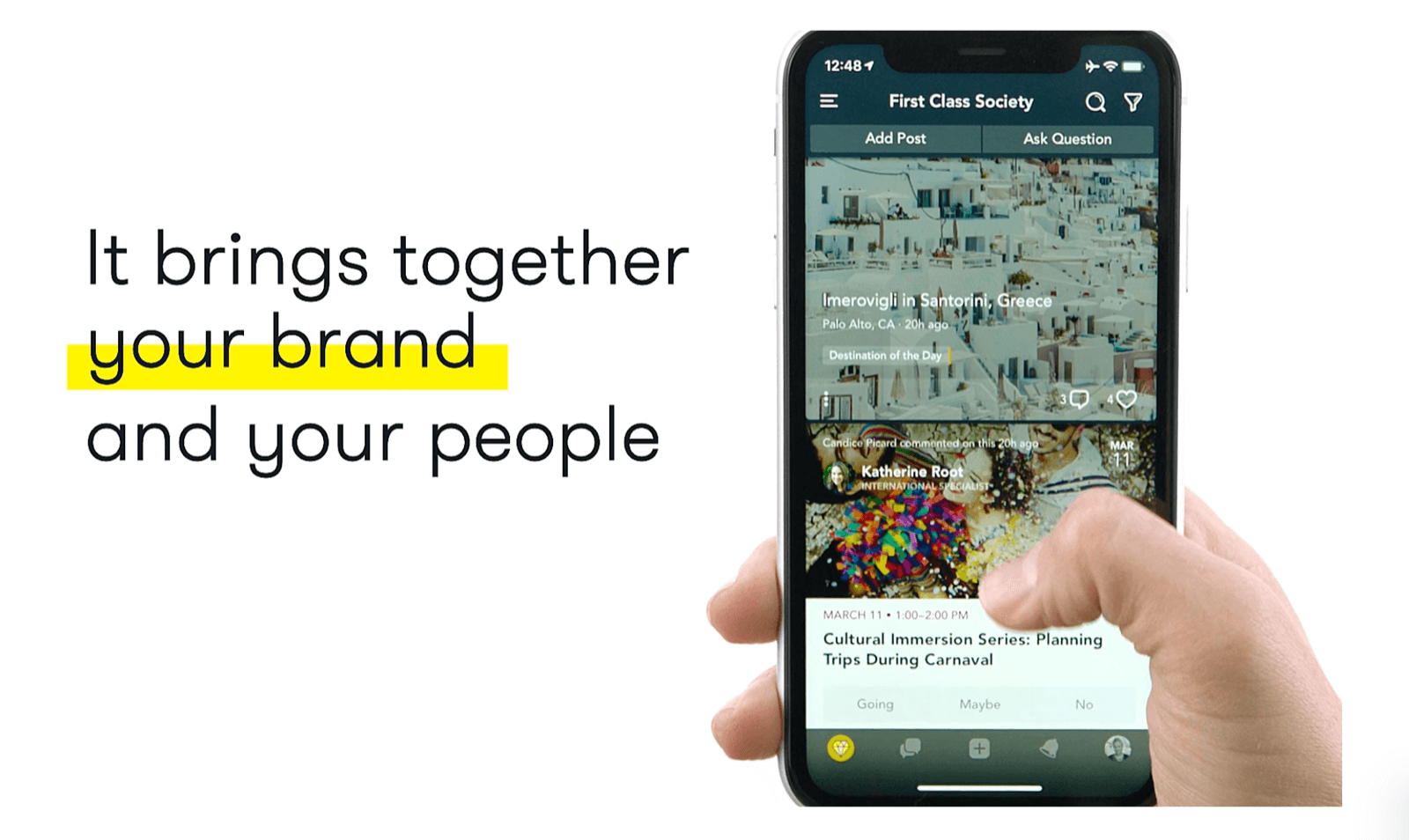
Why Communities and Groups Matter for Marketers in 2019
The number-one goal of any marketer is to bring more people to a product or service; ideally, at the lowest cost possible. A community helps marketers do this quicker and at a significantly lower cost. Where you build that community matters.
If you are “building a community” on the general, one-size-fits-all social platforms out there, Gina says you’re actually building an audience, you’re not building a community. Gina acknowledges that she holds a contrarian view in this regard.
She says the difference is that if someone follows you on these platforms, your brand doesn’t get more valuable for them as new followers are added. On the other hand, when you create a space for people to meet each other in a natural, fast, normal, and valuable way, they’re actually able to get value from each other. That’s community with a network effect.
A marketer who isn’t thinking about how to create a network effect—a community where you actually build relationships among the people who follow you or are fans of your brand—then you’re absolutely leaving attention on the table. And you’re spending more on marketing than you would have to if you were creating a community with network effect.
Businesses—especially those that offer digital services, are healthcare-related, or have an education component to them—will find that they’re better served by creating a community space separate from the noise and clutter of social media. Rather than fighting for voice alongside every other competitor and users’ friends, businesses can focus on building relationships among their fans and followers.
I share how we’ve created a similar on-site experience for our Social Media Marketing World attendees. They come to listen to experts but the part that they actually enjoy the most is the Networking Plaza, which is a couple of hundred tables people sit at and discuss a common marketing interest or sector. People walk away from that wowed because they find and connect with other people just like them.
Not only can you recreate this type of experience online, Gina says, you can also do it at scale while reducing your marketing costs. Especially if you put the idea of helping members master something together at the core of your efforts.
I ask for a real-world example and Gina points to Yoga with Adrienne and their community called Find What Feels Good, which was originally on Facebook.
The Facebook news feed can often be full of posts that are highly charged so when people were clicking into the private yoga group, they were “coming in hot and ready for a fight.” This defeats the purpose of a group focused on practicing yoga. That was when group admins said, “Hey, wait a second. It’s time for us to move.”
They moved Find What Feels Good to a Mighty Network to see what would happen. While members were asking the same questions in both places, admins noticed deeper conversations and more engaged people in the community that was off Facebook.
This January, when they offered their annual 30-day yoga challenge, the off-Facebook community grew from 40K members to 90K members in a single month.
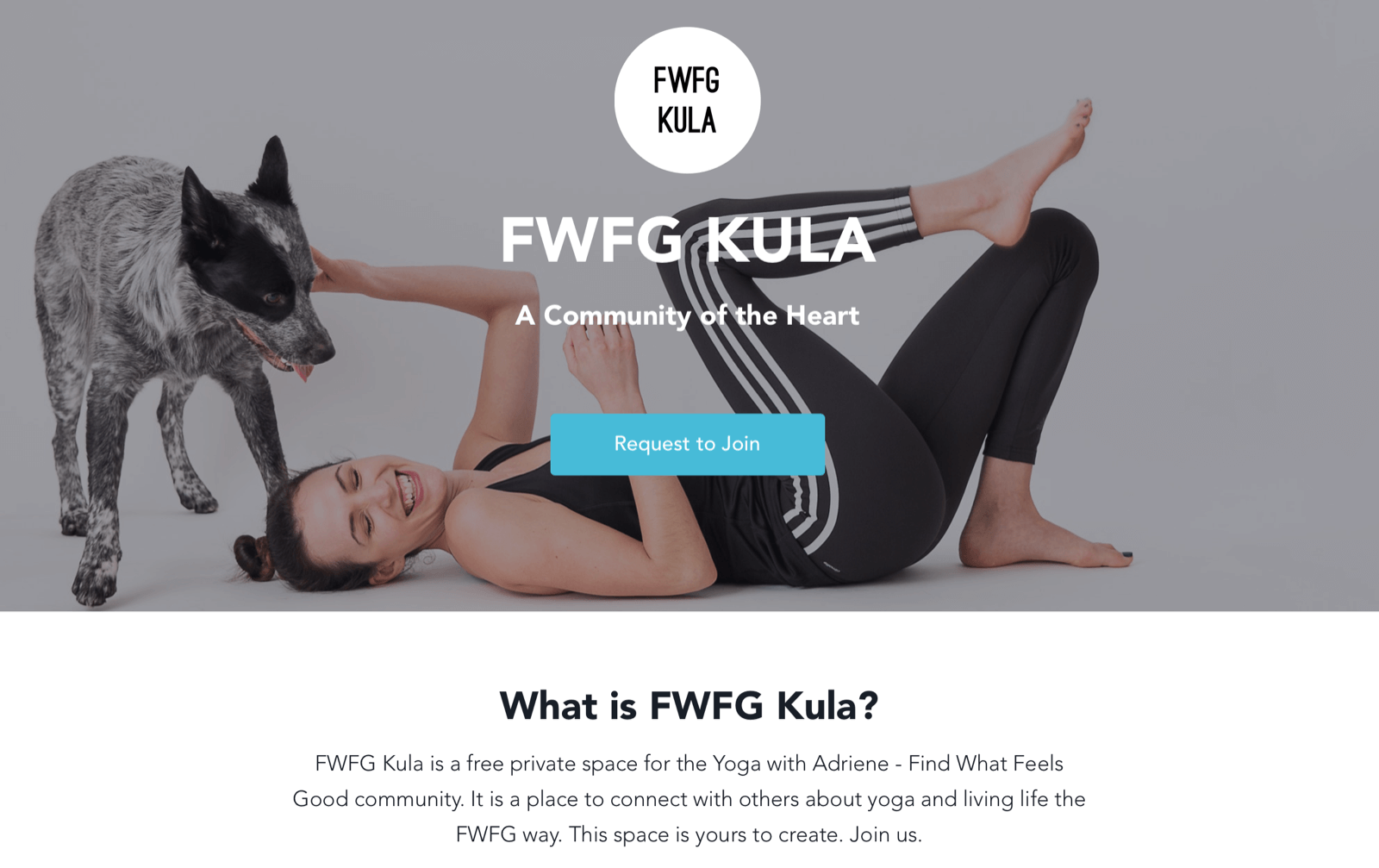
How Will Marketers Use Social Media Platforms in the Future?
Gina doesn’t think social platforms are going anywhere anytime soon, but she does think cracks in their armor are showing. While some people are abandoning the platforms, most people won’t delete Facebook. They’ll just spend a little less time there.
The future will be won by courageous marketers who do two things. They’ll use social platforms for what they’re good at right now, and they’ll also build something under their brand to bring their fans, followers, customers, and prospective customers together around mastering something interesting that’s important to them. They’ll oversee the relationships that people are building and have access to all of that data.
What’s getting in the way of that?
The last decade has beaten out of marketers the confidence that they can do anything that’s self-owned and -operated. Businesses were trying to compete against Facebook with a static website by pushing content into the site. That wasn’t engaging and didn’t mimic all of the things that Facebook brought to the table.
But Facebook, in and of itself, isn’t magic. The magic is in how you create experiences that bring people together; it’s in community-driven brand-building.
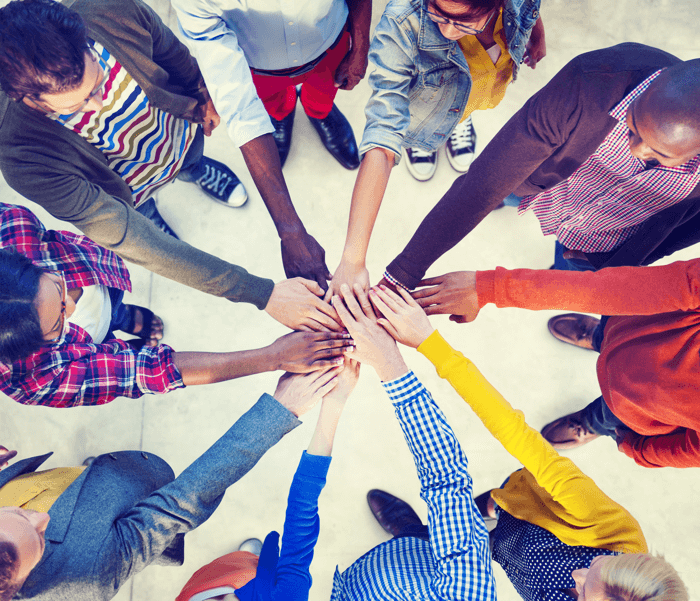 But things have started to change. Today, even though creators and people selling digital services continue to build audiences on Facebook and Instagram, they’re looking for ways to monetize the network effect and sell their products on a platform they own and operate.
But things have started to change. Today, even though creators and people selling digital services continue to build audiences on Facebook and Instagram, they’re looking for ways to monetize the network effect and sell their products on a platform they own and operate.
Content marketers can easily adapt this to serve their own efforts. Brands that choose to build out their owned and operated community will have opportunities to win in a way that’s simply not possible on social media today. Their marketing costs will go down and engagement will go up.
Where Does Facebook Fit in This Picture?
Shortly after Mark Zuckerberg said Facebook was focused on privacy and groups, Gina wrote an article titled, Facebook Is Gaslighting Us.
She believes nothing is important to Facebook unless they can generate significant revenue from it. They have $55 billion in revenue they have to grow at 10%-20% each year. The North American and European markets that generate 70% of their advertising revenue are flat in terms of actual users and usage. That’s the business reality of Facebook.
Facebook cares about stock price. If they cared about something other than stock price, they would probably make different decisions than those they’re making today.
Going back to 2007 and 2008, the promise of Facebook for brands was that you would create a Facebook page and people would show up on your Facebook page. That was going to be your new website and the place where people would interact with your brand. If you wanted to pay to get in front of new people so they would find your Facebook page, you could do that. You would acquire them for $5 or $10, and then they were your fan. People went all-in on Facebook.
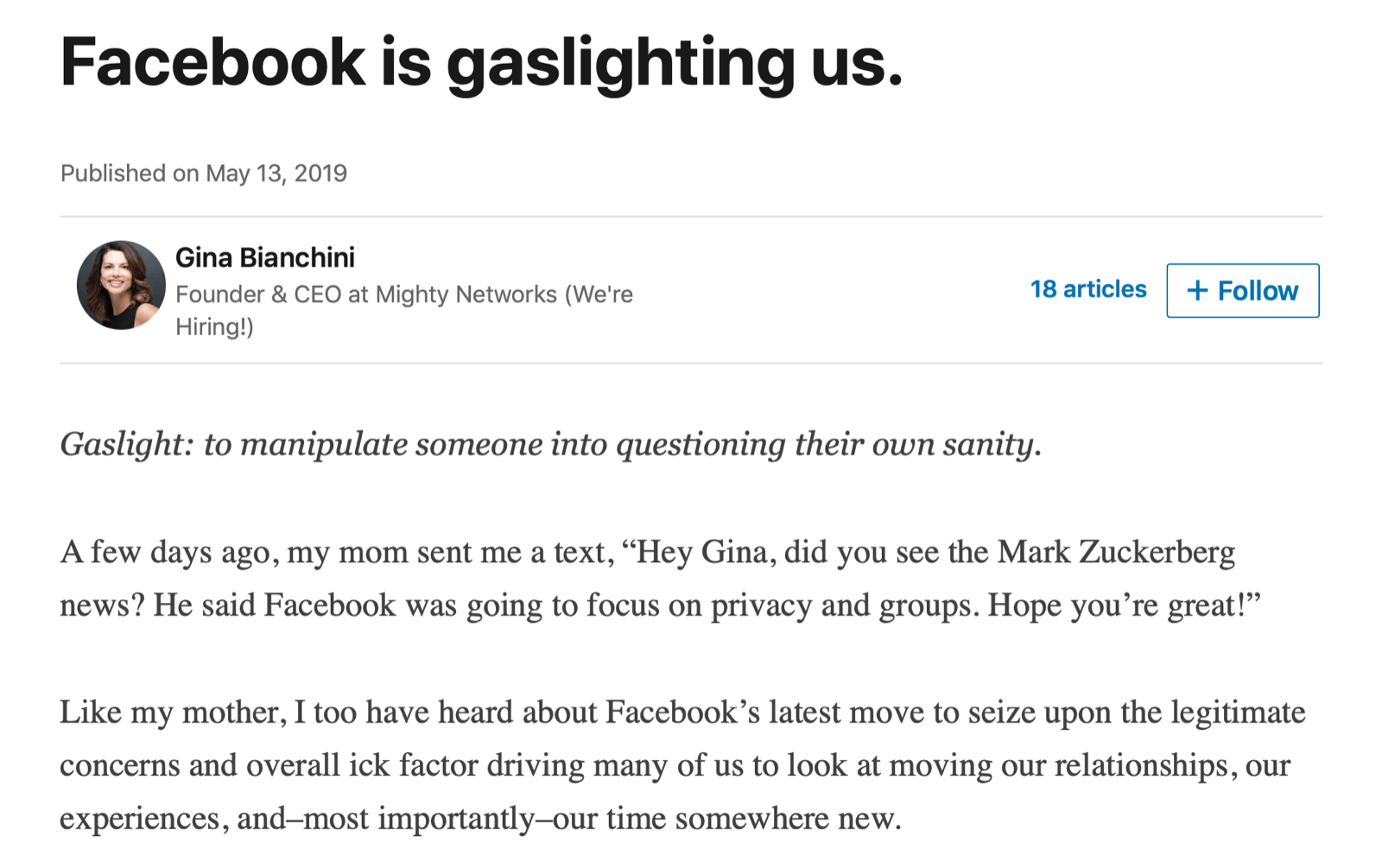
Here’s the kicker: The exponential, hyper-growth of Facebook came at the same time brands decided to start including “Find us on Facebook” in their advertisements. They basically began to market Facebook at the expense of, on some level, their own business.
A few years later, Facebook changed the rules. They essentially got rid of Facebook pages’ functionality and moved everything into the news feed. Now you have to fight and pay to reach your people a second, third, and tenth time.
Today, a generous estimate is 3%-5% of your fans and followers will see any of your organic posts. Facebook is making their money on page owners who have to get a message in front of their fans and will pay to do so.
The idea that the same scenario won’t play out with Facebook groups is just naïve. So how should marketers approach Facebook?
Gina has a Facebook account but says she’s stopped advertising on the platform because it’s not nearly as effective for her as other channels. She says the arbitrage opportunity with Facebook is in how you use it to funnel its organic and paid traffic into something you own.
A Mighty Network Versus Facebook Groups
I ask Gina how much of Facebook Groups’ functionality is found in a Mighty Network. She says the platform currently allows you to embed live video via Zoom, Crowdcast, and Google Hangouts, and native live video is on the horizon. Additionally, one-to-one messaging is available to users right now and multi-person chat will be added in the next 3 months.
There are also some features that differentiate Mighty Networks from Facebook Groups.
First and foremost, there’s no advertising on the platform so your brand’s premium positioning is protected. Second, you can bring together content courses and sell them as digital services or products. Soon, Gina says, you’ll even have the ability to charge for individual groups and courses or bundles. You can also find members near you, members like you, and members who share the same interests as you.
I point out the one big advantage Facebook has is that a lot of people live and breathe on the platform, and I wonder how a Mighty Network gets people to come back on a regular basis.
Primarily, Gina says, it’s the engagement. Engagement on Mighty Networks is really high because people are able to meet others like them in the context of a shared interest outside of the noise and the clutter of Facebook. Basically, people come back because it’s not Facebook.
Discovery of the Week
Quicc.io is a web-based and mobile application that uses AI to automatically transcribe and burn captions into vertical and horizontal video.
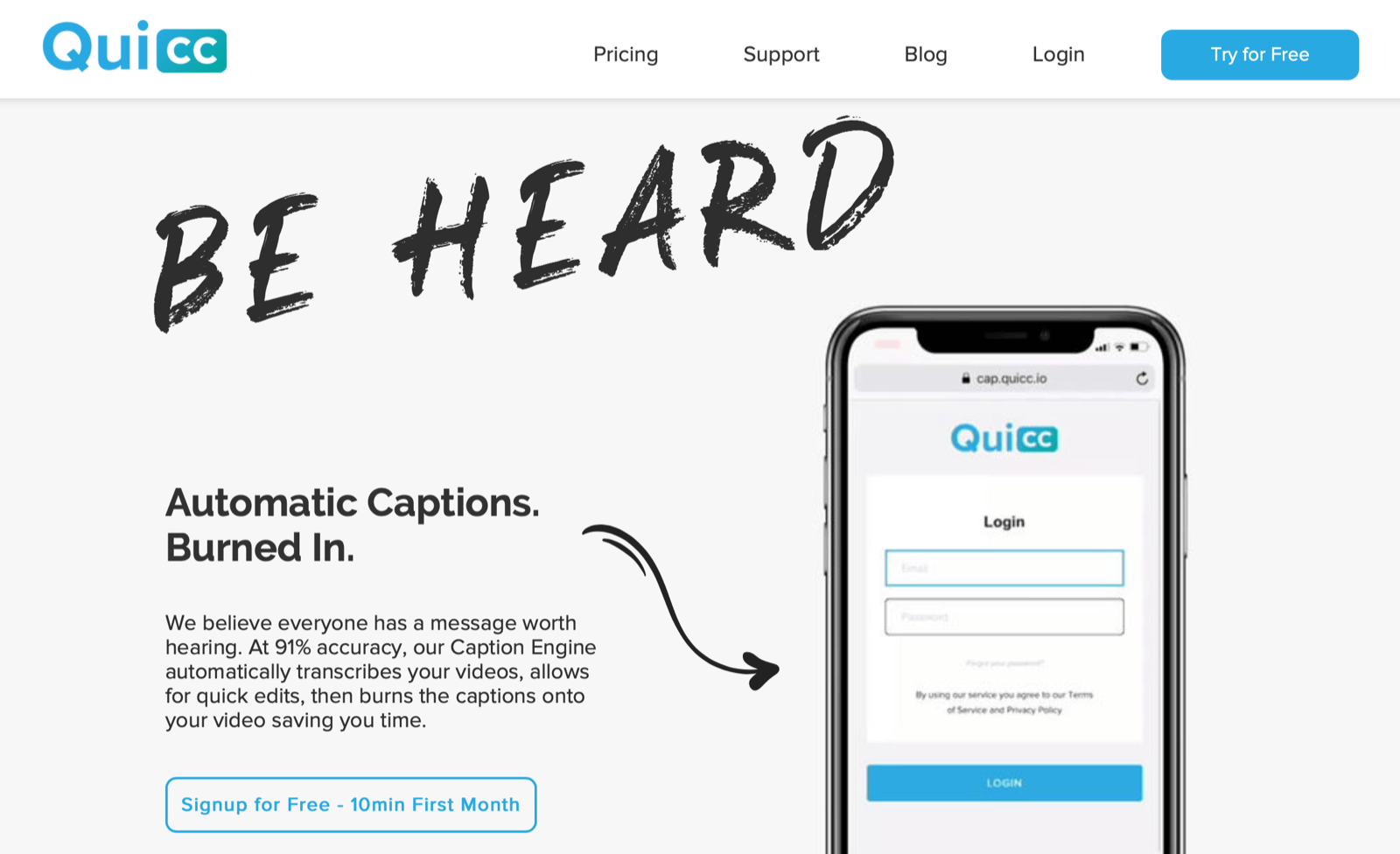
For instance, you can record Instagram Stories snippets, upload the video to Quicc, and you’ll get a preview of the captions burned in so you can fix any errors or misspellings.
When you’re happy with the transcription copy, you can format the type font, size, and color to best match your branding. Then you can add a background, outline, or drop shadow so it pops a little more.
When you download the finished product, you can also get an SRT file.
The free account will transcribe 2 minutes of video per month. Paid plan pricing begins at $12 per month for 10 minutes of video transcription.
Listen to the show to hear more about Quicc.io.
Key Takeaways:
- Learn more about Gina Bianchini and Mighty Networks.
- Read Mark Zuckerberg’s 2019 F8 conference keynote.
- Read Gina’s article, Facebook Is Gaslighting Us.
- Try video transcription with Quicc.io.
- Learn more about the Video Marketing Summit at VideoMarketingSummit.live.
- Watch our weekly Social Media Marketing Talk Show on Fridays at 10 AM Pacific on Crowdcast or tune in on Facebook Live.
